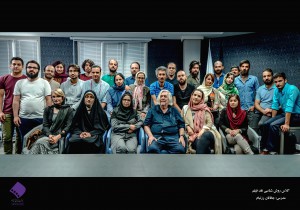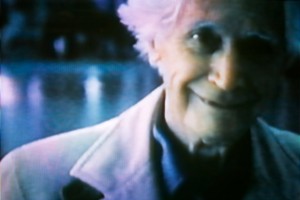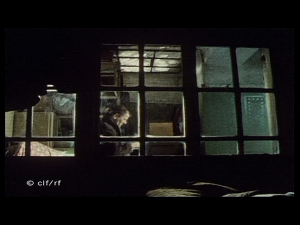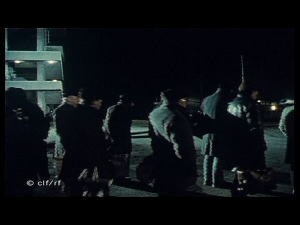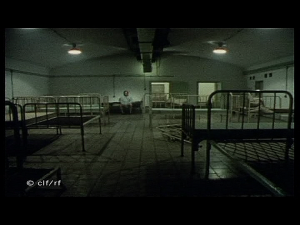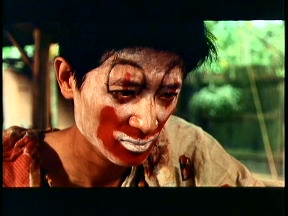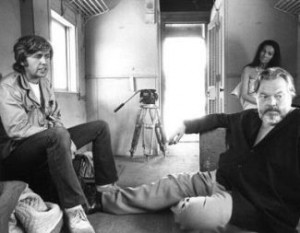Written for the U.K. journal Underline in July 2018. — J.R.
In mid-July 2018, I had the honour and privilege of helping to launch an ambitious lecture series in English at the Iranian National School of Cinema – at their attractive and comfortable new headquarters, built only a couple of years ago – by giving a week of daily two-hour lectures about film criticism. Other guest lecturers over the next several months will include Dina Iordanova from Scotland, art historian Marion Zilio from France, Dudley Andrew from the US, Jean-Michel Frodon from France, Paolo Mereghetti from Italy, Carlos F. Heredero from Spain, and Raymond Bellour from France. Several Iranian film critics will also be featured.
The hundred or so students who applied to enroll in this moderately priced series had to take an exam testing their knowledge of film history and their proficiency in English, and roughly a quarter of these applicants were accepted. This winnowing out of applicants proved to be quite efficient in yielding a group of students who were appreciative of such contemporary filmmakers as Abbas Kiarostami, Béla Tarr, and Andrei Tarkovsky and able to write the sort of English that communicated in spite of some uncertain grammar.
The students who were accepted onto the lecture series were assigned the task of writing a single paragraph about one of two films that I had shown them, neither of which they had previously seen: Peter Thompson’s 1981 Anything Else and Tarr’s 1990 short The Last Boat. Most of them, unsurprisingly, picked the latter. Thompson’s minimalist portrait of his late father, composed largely of still frames from two short stretches of home-movie footage, is accompanied by a lengthy narration written and delivered in a Bressonian monotone by Thompson himself. Although some students were affected by the musical qualities of his voice, reflecting his early career as a classical guitarist, they also found the lengthy text difficult to follow (even after being directed to the screenplay online), in contrast to the less important and easier to grasp dialogue in Tarr’s film. The most important verbiage in The Last Boat is a printed text travelling across the screen at the same time that the title boat does, carrying weary and battered immigrants to an uncertain destination, and concluding, apocalyptically, ‘That was Hungary’. One of the students who wanted to subtitle the film in Farsi told me that they were tempted to translate this as ‘That was Iran’.
At least a couple of the students wrote several pages about The Last Boat, and after I read their reviews aloud in English, I asked them to translate their own texts into Farsi for the benefit of the other students. Their perceptions were most often sensitive, and one student even had the wherewithal to identify a statue that appears early in The Last Boat and its location in Budapest via internet research. More generally, all of the students who wrote reviews showed more interest in philosophical and spiritual questions than I would expect to find in their Anglo-American counterparts. (One paper begins, ‘Bela Tarr’s cinema means: Think before you watch it, even if it’s impossible!’ and ends, ‘Film summary: It’s been said that we’re okay, but don’t believe it!’ Another review begins, ‘Like a crazy life, we experience external and internal movement and [the] camera helps us to feel this experience, if not in [the] motion of [the] ship, if not in [the] activity of noisy cars, then in a crazy movement of [the] camera which [passes] men with their sad, lonely and hopeless faces.’)
I strongly believe that film criticism should offer neither the first nor the last word about a given film but should figure as an intervention in a social discourse that already exists independently of the critic. I, therefore, decided that dialogues rather than monologues were the best way of proceeding. An able translator helped myself and the others present when the intended meanings of our comments weren’t fully clear. This functioned most effectively when he drafted a summary in Farsi of what I was saying and then projected it onto the video screen behind me, a bit like operatic surtitles. I also stressed that I wasn’t interested in imposing a particular methodology or style of criticism on them but wanted them to find their own, quoting Jean-Luc Godard when he once said to me in an interview that he’d rather be regarded as an aeroplane than as an airport – that is, as a vehicle for taking his passengers wherever they wanted to go, not as a destination. (By implication, whenever they reached their own destination, they could step off the plane.) When students asked me what film criticism should do, I asked them the same question and then suggested that their practice should be dictated by their answers.
It would obviously have been foolhardy to plan ‘spontaneous’ dialogues in advance. I had at most a loose list of topics to be addressed, such as the purpose and function of film criticism, how I became a film critic, criticism versus reviewing, the ambiguous value of evaluation, the virtues of mimetic criticism inspired by the form and/or style of a given film or director, and writing about film versus writing about the world.
Some students were sceptical about my showing them only unconventional and ‘difficult’ films, in contrast to the kinds of films that most people see. (One, in particular, was dubious about the minimalism of Anything Else, questioning whether or not it even qualified as ‘cinema’.) I wanted to also show them a more conventional narrative short – Hou Hsiao-hsien’s ‘Son’s Big Doll’, his episode in the Taiwanese feature The Sandwich Man – but technical problems in screening it, followed by a lack of enough time, prevented me from doing so. I also discussed with them some of the issues and challenges raised by more commercial films and explained that my own choice of films was predicated on selecting works that I knew they hadn’t already seen.
I also managed to show the students a short video I made with Kevin B. Lee about Orson Welles – partly as a complement to my lengthy description of an essay I was currently writing about Welles’s posthumously completed and not yet released The Other Side of the Wind, on which I served as consultant, a piece that tried to combine my criticism with information about the various creative roles that sculptor-actress-writer Oja Kodar had on the film in collaboration with Welles, which I had just learned about while visiting her in her remote seaside home in Croatia. I went into detail about this essay (and about Welles’s challenging film, which I obviously couldn’t show), not to argue on behalf of my own positions or methodology but to illustrate practically the complex set of agendas and aspirations that a piece of film criticism might have, and how they might be coordinated and reconciled with one another. I was especially interested in anticipating possible misreadings of the film, based on public expectations fostered by publicity and even to some extent by Welles himself, and hopefully establishing a more fruitful critical framework for understanding the film. But I also stressed that my own recourse to autobiography was only one of many possible approaches to these aims after some students asked me if I was recommending this method. And most of the reviews that the students wrote, I’m happy to report, managed to be personal and distinctive, such as the ones quoted from above, without being autobiographical.

